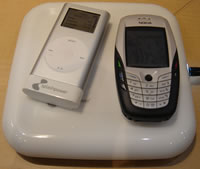 There is a dilemma with the pursuit of mobile living that we’re all familiar with. The constant need for recharging.
There is a dilemma with the pursuit of mobile living that we’re all familiar with. The constant need for recharging.
Battery technology hasn’t kept pace with the frantic dash of processor development and generally more processing power needs more electricity. This leads to the need to packing a considerable number of different power chargers.
Standards in this area are hard to find.
By the sheer number of mobile phones that they have sold, Nokia have, by default, become a form of (power adaptor) standard. While other mobile phone companies took the introduction of each model as an opportunity for extra profit, by altering the power connector of each device, Nokia standardised.
This sensible approch has lead to the point of knowing that most houses that you visit will have at least one Nokia charger knocking around somewhere. Slowly, and I suspect, rather begrudgingly, other companies are starting to take advantage of this too.
A Thomson bluetooth headset, the Liberty, that I recently acquired came with a small interconnect between mains charger and the headset that was designed to be used with a Nokia charger.
As I covered in The Guardian today, what’s needed is a universal standard and UK company Splashpower hopes they’re the company that could help empty your suitcase of power leads, taking you to recharging nirvana.
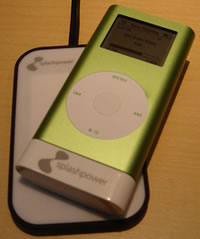 Theirs is a contact-less charger, so there’s no worry about different connectors. It uses electromagnetic induction to pass electricity from a charging plate to any suitably equipped device that’s placed on it. Think cordless kettle or electric toothbrush.
Theirs is a contact-less charger, so there’s no worry about different connectors. It uses electromagnetic induction to pass electricity from a charging plate to any suitably equipped device that’s placed on it. Think cordless kettle or electric toothbrush.
How do you use it? It couldn’t be easier, just place your device with a SplashModule on a splash pad and it starts charging.
A very neat idea – if not a little magical.
This is all fine and dandy, but I see it’s a pretty hard business to succeed in. Not only do they have to persuade the makers of the devices that they need Splashpower charging – taking away possible profits from them in additional charge sales as people need one for the office and another for home – but the Splashpower unit has to be incorporated into the mobile device too.
The barriers – additional costs. A concern where price pressure on mobile companies is constant in countries like the UK where the consumer expect their next handset to be free or at least very cheap
– While Spashpower have managed to incorporate all of the required gubbins into a Nokia 6630 without it protruding beyond the original case. The space required is a challenge in the era of ever decreasing size and ever increasing function.
– The design of any Splashpowered handset need to be designed with this in mind from the outset to ensure no interference with the phones reception.
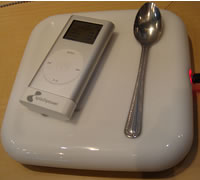 Beyond that they have to persuade the device manufacturers to include their SplashModule in devices, but without the charging SplashPads out there, why would they? The same is true to the venues installing SplashPads, without a pool of equipped mobile devices.
Beyond that they have to persuade the device manufacturers to include their SplashModule in devices, but without the charging SplashPads out there, why would they? The same is true to the venues installing SplashPads, without a pool of equipped mobile devices.
I suspect that in the four years they’ve been in existence, they’ve realised this. While perfecting the product and applying for patents, they’ve also been putting deals together.
Putting this to Lily Cheng, the co-founding CEO, revealed that they’re in discussion with two posh hotel chains mentioned in the article, Penninsular and Radisson Mayfair, who are planning to build the SplashPad’s into the bedside units, so the execs can sleep soundly knowing their mobiles will be fully charged in the morning.
The surprising one for me was the up-market office furniture makers, who are seeing it not only as a way of recharging mobile technology, but for placing other wire-free electrical items on the desks, such as lamps and fans. Cue minimalist interior designers and architects fainting at the prospect of wire-free desks.
With all of this up-market talk, I wonder if the unnamed mobile phone company they’re also in talks with is Vertu, Nokia’s uber-expensive mobile brand.
So what was new at Ceatec for them?
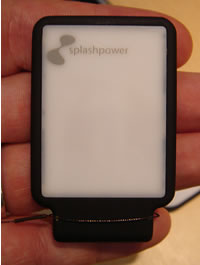 They’ve expanded their range of pads to include one that charges two devices and a single unit too, which is a smaller, travel-friendly version. In the current trend for personalisation, decorated/pattered covers can be fitted to the front.
They’ve expanded their range of pads to include one that charges two devices and a single unit too, which is a smaller, travel-friendly version. In the current trend for personalisation, decorated/pattered covers can be fitted to the front.
Rather than wait around for the makers of portable devices to catch up with their thinking, they designed and made adaptors for a number of devices – iPod Mini and DoCoMo FOMA phones – that consumers can buy and attach themselves. Other adaptors are on their way for other devices including the ever-expanding range of iPods.
I really hope Splashpower succeed. They got a strong idea and when you see it, you’ll wonder why we’re not all using this already – another step in the freedom from wires.
Photos shot on a DSC-T7
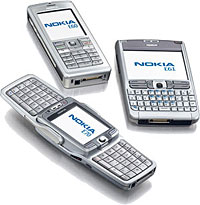 Nokia has announced the Eseries phones, a new range of devices designed for swivel action execs and be-suited business bods.
Nokia has announced the Eseries phones, a new range of devices designed for swivel action execs and be-suited business bods.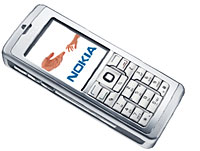 The devices are the first in the industry to support remote device management based on OMA DM*, letting IT managers remotely control and protect corporate data on the device and fiddle about with phone configurations. Or just have a good nose about.
The devices are the first in the industry to support remote device management based on OMA DM*, letting IT managers remotely control and protect corporate data on the device and fiddle about with phone configurations. Or just have a good nose about.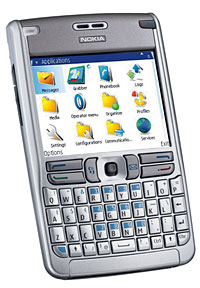 Nokia E61 (right)
Nokia E61 (right)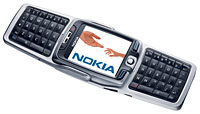 Nokia E70 (left)
Nokia E70 (left)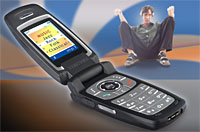 Just like the Smash aliens falling over laughing at the sight of humans mashing potatoes, one day people may look back in amazement that people used to walk around the streets with bits of wire hanging from their lug’oles.
Just like the Smash aliens falling over laughing at the sight of humans mashing potatoes, one day people may look back in amazement that people used to walk around the streets with bits of wire hanging from their lug’oles. Using CSR’s BlueCore3-ROM (BC3-ROM) and proprietary BlueCore Host Software (BCHS) – whatever they are – Samsung’s phones can wirelessly stream MP3 music via Bluetooth to the latest Bluetooth stereo headsets, like their very own SBH100.
Using CSR’s BlueCore3-ROM (BC3-ROM) and proprietary BlueCore Host Software (BCHS) – whatever they are – Samsung’s phones can wirelessly stream MP3 music via Bluetooth to the latest Bluetooth stereo headsets, like their very own SBH100.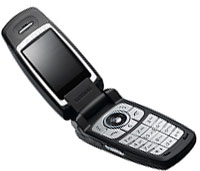 The integrated BlueCore Host Software helps reduce the power consumption of the Bluetooth device by implementing all of the Bluetooth lower power modes such as deep sleep, letting uses take full advantage of all handset features without draining battery life.
The integrated BlueCore Host Software helps reduce the power consumption of the Bluetooth device by implementing all of the Bluetooth lower power modes such as deep sleep, letting uses take full advantage of all handset features without draining battery life.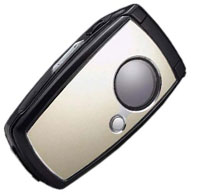 The SGH-E750 and SGH-E760 handsets are expected to be available on GSM networks worldwide in Q4 2005.
The SGH-E750 and SGH-E760 handsets are expected to be available on GSM networks worldwide in Q4 2005.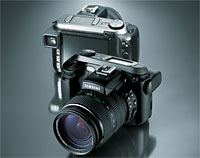 With the corporate might and phenomonal R&D budgets of Nikon and Canon continuing to create cameras that dominate the dSLR (digital Single Lens Reflex) market, smaller brands are discovering the benefits of pooling their resources to produce rival products.
With the corporate might and phenomonal R&D budgets of Nikon and Canon continuing to create cameras that dominate the dSLR (digital Single Lens Reflex) market, smaller brands are discovering the benefits of pooling their resources to produce rival products.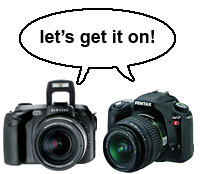 The partnership will draw on Samsung’s digital image processing technologies, brand recognition and digital convergence technologies while Pentax can offer an established dSLR brand with a huge range of interchangeable lenses. It can’t hurt that Samsung currently are one of the biggest players in LCD screens production.
The partnership will draw on Samsung’s digital image processing technologies, brand recognition and digital convergence technologies while Pentax can offer an established dSLR brand with a huge range of interchangeable lenses. It can’t hurt that Samsung currently are one of the biggest players in LCD screens production.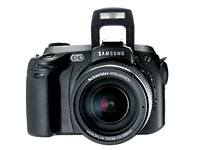 Samsung’s recent Pro815, an advanced prosumer compact digital camera, attracted praise for its innovation while Pentax’s *ist dSLR range has won many friends, although failing to match the popularity of rival Nikon and Canon products,
Samsung’s recent Pro815, an advanced prosumer compact digital camera, attracted praise for its innovation while Pentax’s *ist dSLR range has won many friends, although failing to match the popularity of rival Nikon and Canon products, Continued growth is predicted for the world-wide digital camera market, with pundits expecting the tally for 2005 to be around 82 million unit sales, soaring to 89 million in 2006.
Continued growth is predicted for the world-wide digital camera market, with pundits expecting the tally for 2005 to be around 82 million unit sales, soaring to 89 million in 2006.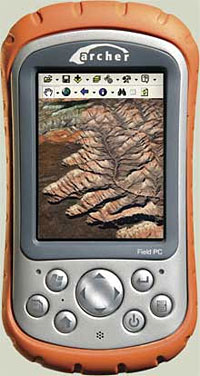 Hardcore outdoor types with lantern jaws will be whooping in their Goretex trews at the prospect of getting their hands on the new rugged Archer Field PC Pocket PC by Juniper Systems.
Hardcore outdoor types with lantern jaws will be whooping in their Goretex trews at the prospect of getting their hands on the new rugged Archer Field PC Pocket PC by Juniper Systems. Also bundled in the package is Microsoft ActiveSync 4.0, Terminal Services Client, Microsoft Windows Media Player 10 Mobile, MSN Messenger and Pocket Internet Explorer.
Also bundled in the package is Microsoft ActiveSync 4.0, Terminal Services Client, Microsoft Windows Media Player 10 Mobile, MSN Messenger and Pocket Internet Explorer.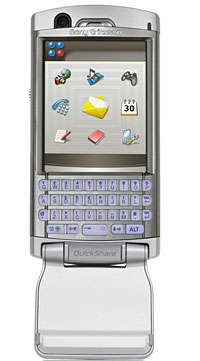 Sony Ericsson has beefed up its flagship P-series smartphone range with the new 3G P990 phone.
Sony Ericsson has beefed up its flagship P-series smartphone range with the new 3G P990 phone.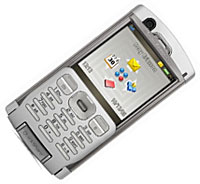 Naturally, Sony are keen to shove their oar into Blackberry’s waters, with the P990 prepared for all major push e-mail clients enabling full e-mail access with attachments.
Naturally, Sony are keen to shove their oar into Blackberry’s waters, with the P990 prepared for all major push e-mail clients enabling full e-mail access with attachments.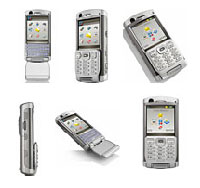 The P990 will be the first commercially available smartphone to use the enhanced Symbian OS version 9.1 and the UIQ 3.0 user interface, which has been optimised for one handed use.
The P990 will be the first commercially available smartphone to use the enhanced Symbian OS version 9.1 and the UIQ 3.0 user interface, which has been optimised for one handed use.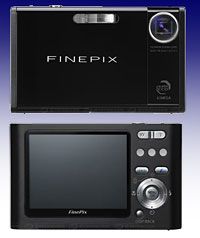 Fujifilm has announced the Fujifilm FinePix Z2 Zoom, a new member of the superslim Z-series, offering 5.1 megapixel resolution and sensitivity up to ISO 1600.
Fujifilm has announced the Fujifilm FinePix Z2 Zoom, a new member of the superslim Z-series, offering 5.1 megapixel resolution and sensitivity up to ISO 1600. The FinePix Z2 Zoom comes with the same reinforced glass 2.5″ screen, but now boasts a higher resolution of 232,000 pixels, and the camera offers a wider aperture range up to F8.0, improved metering (256-zone, up from 64-zone) and a longer maximum shutter speed of four seconds.
The FinePix Z2 Zoom comes with the same reinforced glass 2.5″ screen, but now boasts a higher resolution of 232,000 pixels, and the camera offers a wider aperture range up to F8.0, improved metering (256-zone, up from 64-zone) and a longer maximum shutter speed of four seconds.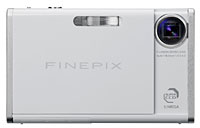 In the real world, the camera’s 3x optical zoom (36 – 108 mm, 35 mm equiv) means that anyone looking to snap a Kate Moss exclusive will have to be pretty close to the catwalk, with the camera’s slow f3.5 – 4.2 lens meaning that higher (and noisier) ISOs would be needed to capture any drug-fuelled stumblings.
In the real world, the camera’s 3x optical zoom (36 – 108 mm, 35 mm equiv) means that anyone looking to snap a Kate Moss exclusive will have to be pretty close to the catwalk, with the camera’s slow f3.5 – 4.2 lens meaning that higher (and noisier) ISOs would be needed to capture any drug-fuelled stumblings.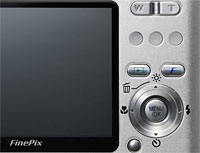 Adrian Clarke, Fujifilm’s Director of Photo Products, was on hand to talk about irony: “It’s ironic that most ultra-slim cameras struggle where they are most frequently used – in low-light social situations, such as parties. With four times the sensitivity, combined with iconic design, the FinePix Z2 Zoom is a camera that truly qualifies as an evening companion.”
Adrian Clarke, Fujifilm’s Director of Photo Products, was on hand to talk about irony: “It’s ironic that most ultra-slim cameras struggle where they are most frequently used – in low-light social situations, such as parties. With four times the sensitivity, combined with iconic design, the FinePix Z2 Zoom is a camera that truly qualifies as an evening companion.”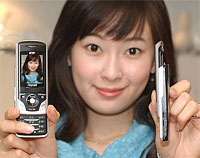 Samsung Electronics have announced a new slim-line phone with an automatic “flying mode” function.
Samsung Electronics have announced a new slim-line phone with an automatic “flying mode” function.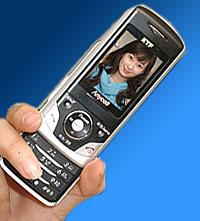 It’s quite an attractive looking phone, with the pocket-untroubling 15.9 mm case coming in a natty black and silver finish with a large-ish LCD and a small sliding keyboard.
It’s quite an attractive looking phone, with the pocket-untroubling 15.9 mm case coming in a natty black and silver finish with a large-ish LCD and a small sliding keyboard.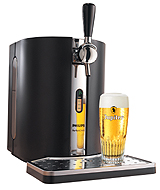 The 2006 world championships draw closer and if you‘ve not yet considered your Christmas gift list, this might be just the thing you were looking for.
The 2006 world championships draw closer and if you‘ve not yet considered your Christmas gift list, this might be just the thing you were looking for. Dell have started shipping a Windows-less desktop PC for customers looking to install other operating systems on their PCs.
Dell have started shipping a Windows-less desktop PC for customers looking to install other operating systems on their PCs.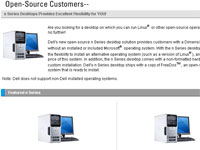 Dell’s new Dimension E510n PC comes with a blank hard drive untouched by all things Microsoft, with the company bunging in a copy of the obscure FreeDOS operating system for users to install, if they so desire.
Dell’s new Dimension E510n PC comes with a blank hard drive untouched by all things Microsoft, with the company bunging in a copy of the obscure FreeDOS operating system for users to install, if they so desire. The base machine’s reasonably specified (a Pentium 4 processor, 512Mbytes memory, 128MB ATI Radeon X300SE HyperMemory video card, Sound Blaster®Live! 24-bit Audio and 80GB hard drive), and knocks out for $774 (~e647~£439).
The base machine’s reasonably specified (a Pentium 4 processor, 512Mbytes memory, 128MB ATI Radeon X300SE HyperMemory video card, Sound Blaster®Live! 24-bit Audio and 80GB hard drive), and knocks out for $774 (~e647~£439).